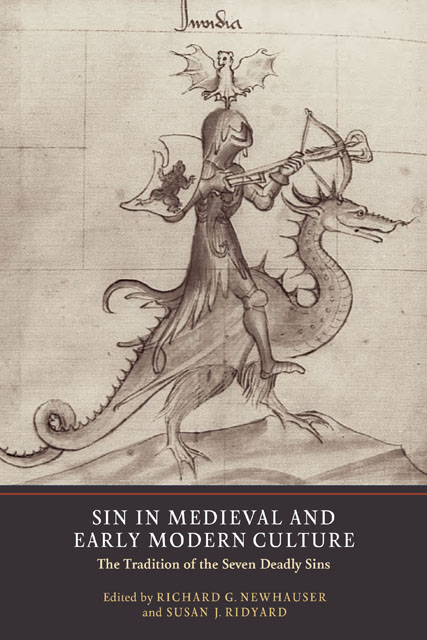11 - Through Boschian Eyes: An Interpretation of the Prado Tabletop of the Seven Deadly Sins
Published online by Cambridge University Press: 28 February 2023
Summary
Interpretations of the Tabletop of the Seven Deadly Sins, a work frequently attributed to Hieronymus Bosch and his workshop, typically describe the painting in straightforward terms, as an admonition against vice in preparation for Final Judgment before God, who knows and sees all. In this essay, I argue that such interpretations are inadequate. Although the panel promotes a rejection of sin and calls viewers to do the right thing, it may also have encouraged beholders to reexamine their hearts and see how love and mercy could potentially trump codes of morality without negating them. The painting invites observers to reconsider the gift of grace. After all, Christ is depicted in the center of the image as the Man of Sorrows. Through the offering of his blood, he grants charity and redemption to those who seek his love rather than the false rewards promised by vice.
The Prado Tabletop of the Seven Deadly Sins (Plate 11.1), probably completed around 1510, is frequently attributed to Hieronymus Bosch and, in view of its uneven execution, his workshop.Yet some scholars believe that it was not produced by Bosch’s hand at all and is the work of a skilled follower. Rather than focus on the problem of attribution, this essay will address the complexities of this unusual early sixteenth-century painting, paying special attention to the ways in which this image seems to look back at the viewer. Whether the panel is by Bosch or merely Boschian is of little consequence to the argument I will provide.
First, however, we briefly need to consider the presence of the evil eye. Although we typically associate the evil eye with witchcraft and superstition, practices either outside Western civilization or prior to the Age of Enlightenment, it has, in a sense, returned to confront, if not haunt, us. In contemporary theoriesof visual culture, especially those linked to post-structuralism, we are frequently encouraged to look with downcast eyes. Vision is considered suspicious. Not only are we cautioned not to believe what we see and told that staring is impolite, but we are also informed that sight can be incredibly violent. Like reason, it can be a potentially dangerous weapon of dominion and control.
French scholars, such as Michel Foucault, are often cited as authors challenging the simple benefits of vision. Foucault makes scattered references to Boschian imagery.
- Type
- Chapter
- Information
- Sin in Medieval and Early Modern CultureThe Tradition of the Seven Deadly Sins, pp. 261 - 281Publisher: Boydell & BrewerPrint publication year: 2012



